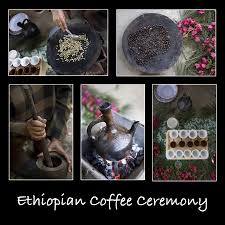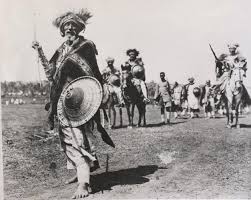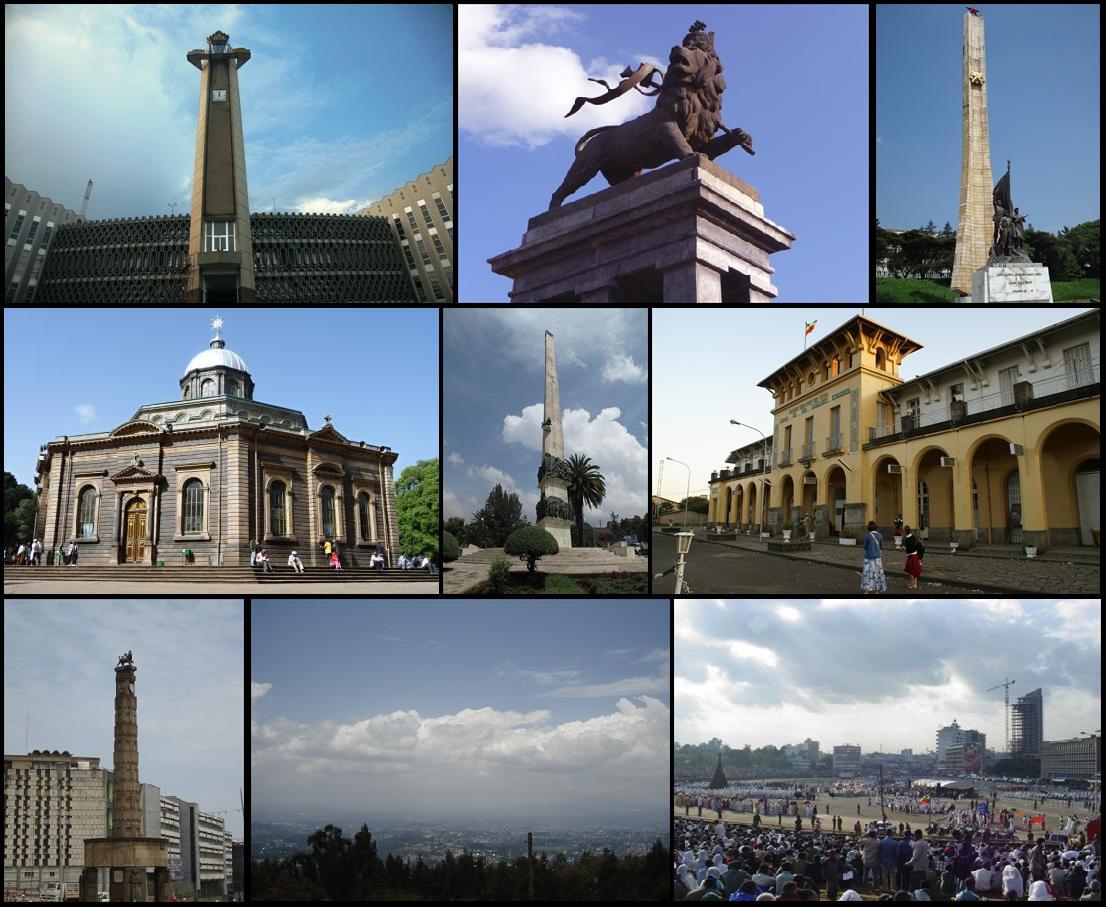I was born in Addis Ababa (Ethiopia) and lived there until 2001 (I was 17).
I believe I am so privileged and empowered by growing up in Ethiopia. Unfortunately,anyone who has never been in Ethiopia, will always associate it to the stigma, the images that the media showed in the 80’s. The hunger, the draught and the skinny babies with flies in their eyes.
Yes Ethiopia like many other countries had problems regarding draught as it is very close to the Sahara Desert. And it had 2 major wars since I was born.
Let me list some facts that you may not be familiar with (photos are courtesy of the web):
- archeologists have been founding skeletons of earliest form of humans (Omo Remains and Homo Sapiens Idaltu)
- a country that was reigned by kings and queens for centuries. The testimony of these dynasty can be seen in the Central and Northern part of the country, where you can find glorious castles.
- Rastafarians worship Haile Selassie (Ras Tafari) who was the last emperor

- Ethiopia along with Lybia were the only African country who were not colonized
- Addis Ababa is the 3rd highest capital city in the world and the diplomatic capital of Africa
- Ethiopia has its own unique alphabet Abugida (209 symbols and 25 letter variants) and has over 200 dialects
- Coffee was first discovered in the region of Kaffa
- Lalibela is found in central Ethiopia, it is a collection of eleven rock-hewn underground churches that were built in the 13th Century
I never had a mother that taught me the art of cooking and the running of a household. My mother died when I was 2 years old. And ever sine I have been surrounded by great women and examples. My neighbour and her daughters (Mamma Kunchie), my grandmother Sophia (my mother’s mom), my aunties and cousins and nannies.
My dad couldn’t raise us by himself so he hired a nanny/domestic. I owe her all the memories I have about Ethiopian food.
Food is a feast of tastes and texture. The base is mostly Injera. It a flat bread with a moist spongy texture. The main ingredient is Teff flour (the smallest seed yet the most nutritious and gluten free).
It is accompanied with various stew (meat or vegetable).
I am not sure about today but when I was living there, the meat that was consumed most was sheep/mutton. We would only go to the butcher if we wanted to buy beef.
And the queen of the festivities and special occasion was chicken.
Chicken and sheep were slaughtered at home. I always watched the slaughter and butchering process (I am not traumatised or am I?) and from an early age I knew where my meat came from.
Beef was often consumed raw or dried.
Ethiopian food is a perfect example of slow food. Everything takes time to prepare, making the end product a delicacy.
The eve of a festivity was a day of preparation, the onion, the garlic and ginger along with Berbere (Ethiopian spiced chilli powder) would be cooking (sometimes over night) in a clay pot over charcoal. The day of the festivity the chicken would be slaughtered, cut into pieces and washed thoroughly before cooking it. I was always assisting and helping, I was in charge of cleaning the stomach. Let me explain! Chickens eat from the ground (free range) and I thought that they might eat gold or anything that was precious. So for me it was like a treasure hunt. I never ever found anything. My reward were the kidney and liver (they were never used in the stew) and I would cook them on the charcoal, season them with salt and enjoy them.
Injera was cooked in the traditional oven in our house. The first one was never a good one so we would have it with a black salt (I really don’t remember the name) or with Niter Kibbeh and Berbere. Niter Kibbeh is a clarified butter with onion, garlic and spices added to it.
My love and knowledge of spices and fresh chilli comes from there. Every time I go to Kakulas Bros and smell the spices I feel like I am back in Ethiopia in front of our pantry. One of the spices that is in my heart and seem not to find anywhere is Korerima. It is a large and dark cardamom (not to be confused with its Indian cousin).
I crave the filled green chillies…when I was a kid my great uncle use to have one with his meal. So I once insisted to try it. He was an intelligent and loving man and he convinced me that chilli was for grown up as red onion was for children. And every time I had a meal with him I would crunch on a raw red onion!!!
Meal time is share time in Ethiopian culture. The family would gather around a big round plate and eat with their hands. Gursha is the act of feeding each other. It is a demonstration of love and affection. It is the same food from the same plate and yet gursha tastes better. Trust me! Check out this Simpsons episode 
Simpsons Ethiopian Restaurant from Folu Aladelusi on Vimeo.
My palate for coffee was developed when I was a child. Since young age we were taught the art of the coffee ceremony. It starts from washing the beans, roasting and grinding them. Then the ground beans would be boiled in a traditional clay pot. The same beans will be boiled and drunk 3 times (the third one is a weak coffee and children were allowed to drink it).

Ethiopians are the most generous and happy people I have ever met in my life. If you visit them, they always offer you something. A great example of hospitality. And if they visit you they never ever come empty handed.
It is amazing how empowering all my childhood memories are for me.
The months from June to early September are considered the wet season. It was a long school holiday and I would stay at home a lot. I learned how to deseed a cotton flower and work it traditionally to make a cotton thread. I learned how to crochet and to embroider on linen cloth.
My friends.
The food and drinks.
The music and dance.
The language.
The games.
The wedding ceremony.
My roots!
So many years have passed since the day I left and I have been dreaming of the day I would go back.
My dear Ethiopian friends and family what are the things that empower you of this beautiful country? Share your thought in the comments below.
See you soon emmamye!
Cheers 















